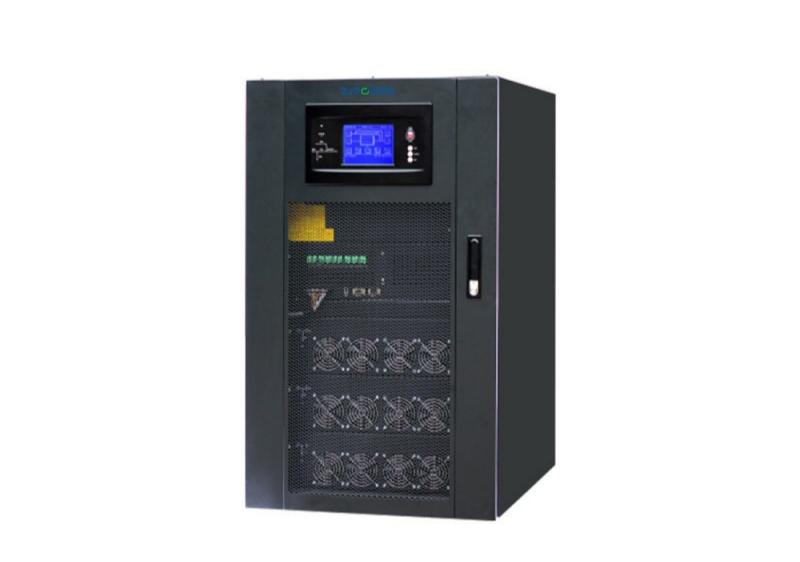

Picking the right 30 kVA modular UPS can feel overwhelming. So many choices and tech specs exist. How do you make sure the unit you pick gives solid, flexible, and effective backup for your key setup? Over the last ten years, I’ve helped many groups—from medium firms to heavy-duty plants—pick, size, and install the perfect uninterruptible power supply. The risk is big.
A bad pick can cause work stops, gear harm, or pricey idle time. This guide walks you through the vital traits and points to note when choosing a 30 kVA modular UPS.
A modular UPS is a backup power system built with single power units. You can add or remove them as required. These setups offer bendability, growth options, and backup safety. The modular style lets you fix or upgrade without shutting down the whole unit. A 30 kVA modular UPS means a system that handles 30 kilovolt-amperes of load. This size fits medium data centers, office towers, clinics, telecom sites, or light factory work. Features of modular UPS include: "Modular design,Up to 20 power modules in parallel online hot-swappable", "N+X redundancy", "Battery cold start", and "Independent charger for each module and intelligently control the whole charging process, prolong the life time of the battery".
When sizing a UPS, match the unit’s rating to your full load. For a 30 kVA unit with a common power factor of 0.9, the output is about 27 kW. Skip oversizing. It brings waste and extra cost. Skip undersizing. It can lead to overloads and breakdowns. Always add a 20–25% cushion for later growth.
How long must your gear run in a blackout? Runtime hinges on battery setup and load size. If you need long runtime, check that the UPS allows extra battery packs or big-capacity battery systems. The 93M Series Modular Online UPS features "Smart Sleep function can intelligently make some power modules go to sleep when load is relatively low, improving the efficiency of the remaining power modules and saving customers on power and cooling costs."
· Standby (Offline): Most simple. Switches to battery in outages. Not good for delicate electronics.
· Line-Interactive: Gives AVR (Automatic Voltage Regulation). Handy for small offices or non-vital uses.
· Online (Double-Conversion): Delivers steady power shield by turning AC to DC and back. Best for vital spots like data centers and clinics.
The GP33 series Low frequency Online UPS is described as: "Double conversion low frequency online type", "Widely used in IDC data exchange center, telecommunication, data center, banks, negotiable securities, traffic, arms, security, electronics, industry, large enterprises".
Lead-acid batteries cost less but weigh more and need more care. Lithium batteries give longer life and better energy packing. "Longer Cycle Life, cycle life up to 3,500 times, 5 times that of ordinary lead-acid batteries. Help reduce battery replacement costs and overall costs. Lighter weight, high density capacity, 3 times the capacity of lead-acid batteries under the same volume."
One top plus of modular systems is their bendability. You can grow by adding units without swapping the full system. Units are usually hot-swappable. You can replace them without stopping work. "Each power module has an independent LCD", "Scalable from 30kVA to 900kVA", and "Power modules working in rotation, prolong the life time".
AVR keeps voltage steady. It fixes low or high voltage without using battery mode. This lengthens battery life and boosts dependability.
Check if the UPS fits your gear’s plug styles and power split needs. Some units use terminal blocks or PDUs for bigger loads.
Top UPS systems offer remote watch via SNMP or RS232 ports. Real-time software can warn staff about issues or faults. The EX6K-EX10KL UPS includes: "Smart RS232 communication with monitoring software", "Intelligent slot available for AS-400 Dry contact and SNMP card Remote control".
Redundancy keeps work going even if one unit fails. Seek systems with N+1 or N+X backup setups. "N+X Parallel Redundancy" is one of the core features in EX6KVA-10KVA Online UPS High Frequency UPS.
Step-by-Step Guide:
1. List all vital gear (servers, storage, routers, cooling) with their wattage.
2. Sum the total wattage.
3. Multiply total wattage by 1.25 to add a 25% cushion.
4. Divide by power factor (usually 0.9) to find needed kVA.
5. Pick a UPS model with at least this kVA and enough runtime.
Always factor in your system’s power factor when picking watts or kVA. For example, if your full load is 24 kW and the power factor is 0.8, you need at least 30 kVA (24 / 0.8 = 30). An example setup might include:
· Servers: 10 kW
· Networking: 4 kW
· Cooling: 5 kW
· Miscellaneous: 2 kW
· Total Load: 21 kW × 1.25 buffer = 26.25 kW → Requires ~30 kVA

Picking a 30 kVA modular UPS goes beyond just capacity. It demands close look at runtime, setup fit, power guard traits, and future growth. Final Buyer Checklist:
· Does it meet your current and future power capacity?
· Does it provide sufficient runtime?
· Is it an online double-conversion type?
· Does it support modular scalability?
· Are remote monitoring options available?
· Does it use high-quality batteries like lithium?
Check your setup well. Feel free to talk with a certified supplier or maker for custom advice. ZLPOWER is a national high-tech enterprise specializing in the research and development, production, and sales of UPS power supply The power capacity range from 200VA to 800KVA which can meet the needs of users in different industries.
A: Yes. Regular checks keep long-term trust. This covers battery health tests, air filter cleaning, firmware updates, connection reviews, and alarm tests. The system intelligently control the whole process of the charging and discharging, effectively improve the life time of the battery.
A: Usually 8–15 years based on use and battery kind. Lithium-ion batteries can last much longer than lead-acid ones due to better energy packing and slower wear. Longer Cycle Life, cycle life up to 3,500 times, 5 times that of ordinary lead-acid batteries.